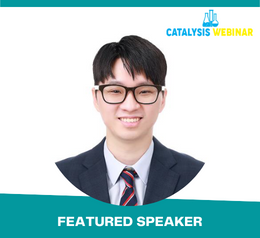Scholars International Webinar on
Catalysis, Chemical Engineering & Technology
THEME: "Contemporary Advances and Innovations in Catalysis and Chemical Engineering Research"
 25-26 Nov 2021
25-26 Nov 2021  Online | Virtual
Online | Virtual THEME: "Contemporary Advances and Innovations in Catalysis and Chemical Engineering Research"
 25-26 Nov 2021
25-26 Nov 2021  Online | Virtual
Online | Virtual 
KAIST, Republic of Korea
Title: AI Enhanced Computational Catalysis Science
Geun Ho’s research focuses on data-driven machine-learning methods, and multiscale modeling strategies to understand complex chemistry and catalysis phenomena and to establish high-throughput materials design methods. He obtained his B.S. in chemical and biomolecular engineering at the University of Illinois at Urbana-Champaign (2012), and his Ph.D. in chemical engineering at the University of Delaware (2018) in the Vlachos research group. Geun Ho is currently a post-doctorate researcher at the KAIST advised by Professor Yousung Jung, looking for a faculty position.
First-principles-based multiscale simulation has enabled atomistic-level mechanism elucidation and the in silico catalyst design via the binding energy activity descriptors. However, the scope of the simulation has been limited to simple, idealized systems due to the high cost of the first-principles calculations. With the advancement of artificial intelligence and the increasing databases, the computational chemical science field is rapidly expanding its simulation scope. In our contribution, we demonstrate machine learning methods to enable the multiscale simulation of complex catalysis systems, and to expand the catalyst screening scope. We developed a deep learning representation, called labeled site that only requires a trivial computational cost to predict binding energy for large chemical space. We apply the labeled site representation to understand the hydrogen evolution kinetics of the highly active jagged Pt nanowire, analysis of which would not be possible with first-principles calculations due to the nanowires’ complex surface. We find that the nanowire exhibits the novel autobifunctional mechanism, where the rough surface provides a synergistic activity increase. We also develop a Gaussian process and density of state-based machine learning method to rapidly screen materials. We apply this method to methane emission reduction catalyst, which reduced the time to identify promising catalysts to within a year from about 5 years.